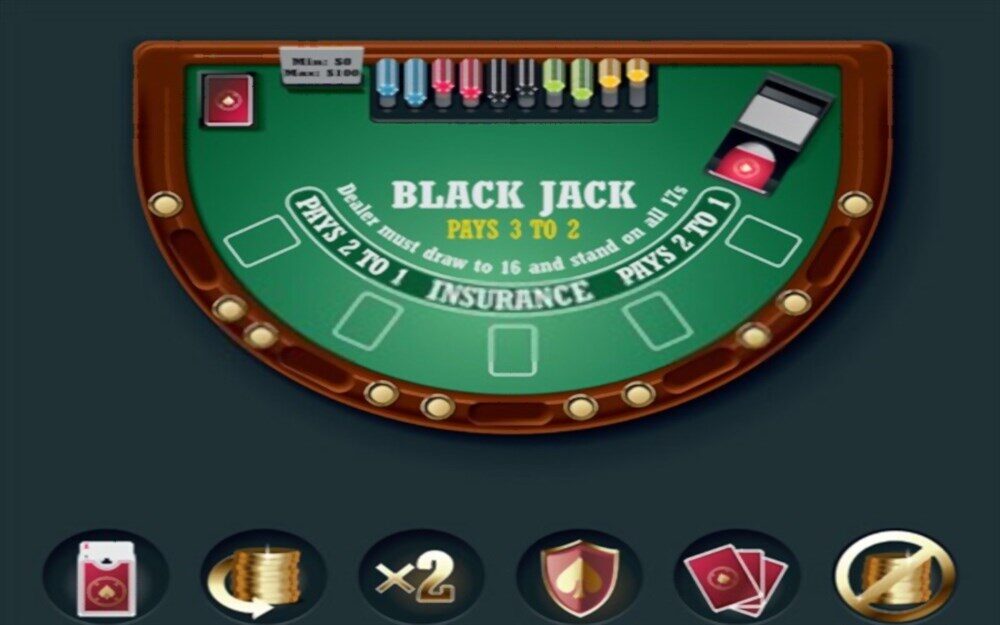
Blackjack is a popular casino game known for its strategic elements and player decision-making. One of the critical choices players face is whether to hit or stand on their hand. In this article, we will explore the factors and strategies involved in determining when to hit or stand in a blackjack game, aiming to provide players with a comprehensive understanding of optimal decision-making.
Before delving into when to hit or stand, it’s essential to have a grasp of the game’s fundamentals. In blackjack, the goal is to achieve a hand total higher than the dealer’s without exceeding 21. Players are dealt two cards initially and can then choose to hit (receive another card) or stand (keep their current hand). The decision-making process revolves around optimizing the chances of achieving a winning hand.
One crucial factor in deciding whether to hit or stand is the evaluation of your hand’s strength. It involves considering both the total value of your hand and the dealer’s upcard. For example, if you have a low-value hand (such as 12) and the dealer’s upcard is weak (such as 4 or 5), hitting might be a more favorable option to improve your hand’s value.
Basic blackjack strategy is a set of predetermined decisions that guide players on when to hit or stand based on the combination of their hand and the dealer’s upcard. This strategy, derived from mathematical calculations, aims to maximize the player’s odds of winning in the long run. Consulting a basic strategy chart can be highly beneficial for players, especially beginners, as it provides guidance on the best course of action for every possible hand scenario.
The dealer’s upcard plays a significant role in determining when to hit or stand. Understanding the dealer’s rules and how they impact their decision-making can inform your own strategy. For instance, if the dealer’s upcard is a low-value card (2-6), they are more likely to bust. In such cases, players may choose to stand on lower hand values to avoid unnecessary risks.
Busting, or exceeding a hand value of 21, is a critical concern when deciding whether to hit or stand. Higher hand values carry a greater risk of busting, while lower hand values provide more flexibility. Evaluating the likelihood of busting based on the current hand and the dealer’s upcard can guide your decision-making process. For instance, if you have a hand value of 16 and the dealer’s upcard is 7 or higher, hitting might be riskier, and standing could be a more prudent choice.
It’s important to note that the optimal strategy for hitting or standing can vary based on the specific rules and variations of blackjack being played. Factors such as the number of decks in play, whether the dealer hits or stands on a soft 17, and any additional rules can influence the decision-making process. Understanding the specific rules of the game you’re playing and adjusting your strategy accordingly is crucial.
Ultimately, becoming proficient at determining when to hit or stand in blackjack comes with practice and experience. By playing the game regularly and analyzing the outcomes of your decisions, you can develop a better sense of when to take certain actions. Learning from both successes and failures will help refine your decision-making skills and improve your overall blackjack strategy.
Estimated reading time: 9 minutes Dinosaurs have always captured our imagination, and online slot developers… Read More
Estimated reading time: 1 minute Spin Palace Casino PA NJ 🇺🇸 Spin Palace Casino may… Read More
Estimated reading time: 7 minutes Think you need to bet big to win big? Think… Read More
Estimated reading time: 9 minutes Funniest Slot Machines in 2025: Slot Games That'll Make You… Read More
Estimated reading time: 10 minutes If you're a movie lover who enjoys spinning the reels,… Read More
Estimated reading time: 7 minutes Tired of long withdrawal times? You're not alone. In today’s… Read More